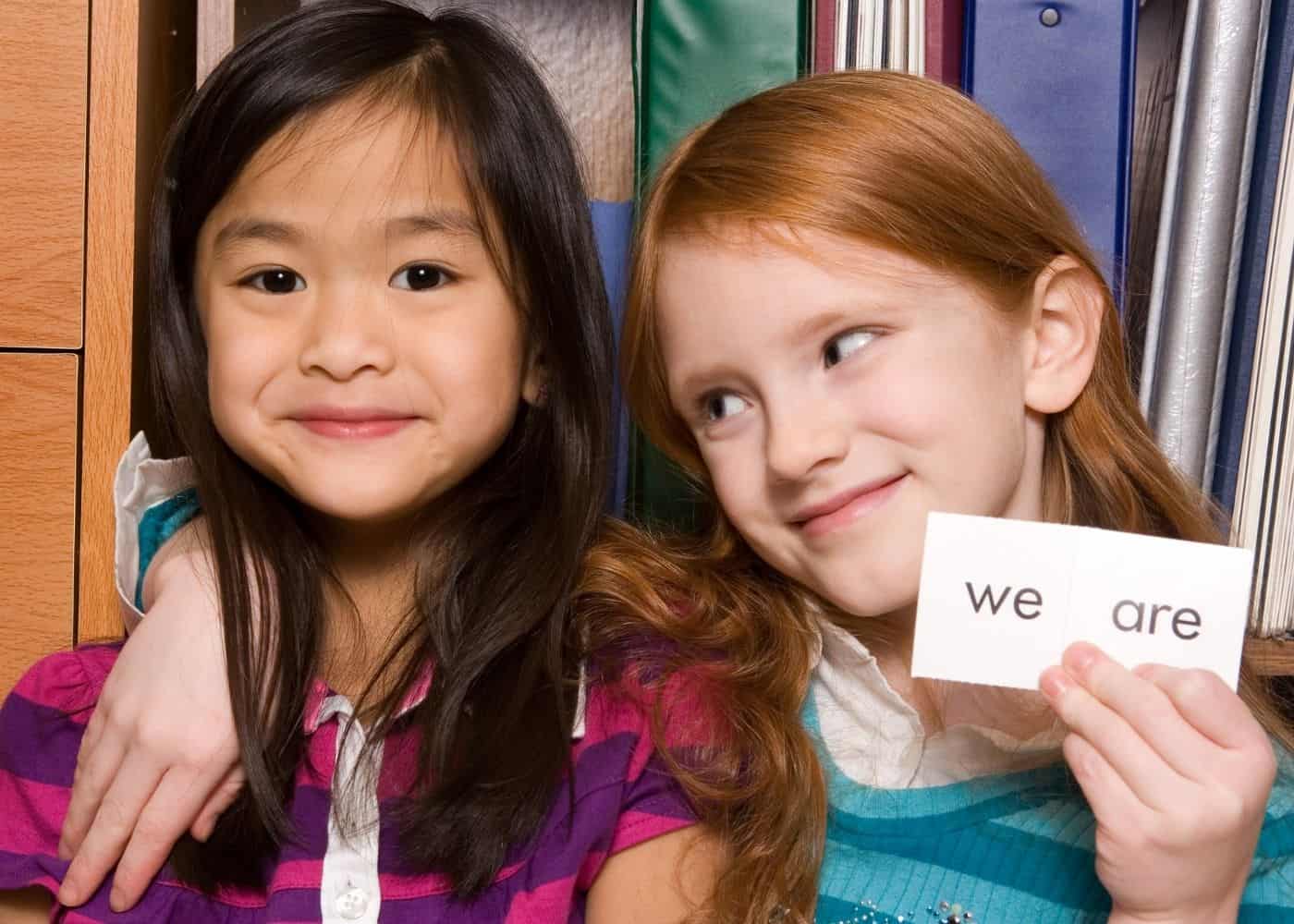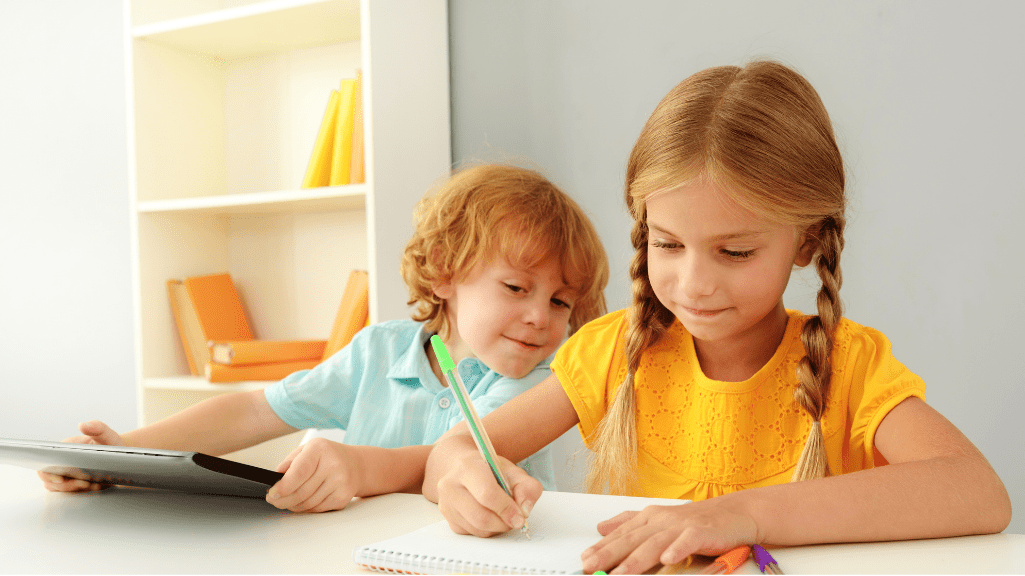Getting ready to teach your pre-K or Kindergarten students how to read sight words? If you’re looking for some ideas about sight word instruction, you’re in the right place!
To teach sight words, start by choosing a list of sight words such as the popular Dolch Sight Word List. Print out the list and consider additional printed resources like flashcards. Then move on to educational activities like reading together, playing sight word games, singing word songs, doing written workbooks, and using online resources like videos and apps. Lastly, keep in mind that teaching sight words takes patience, persistence, and a commitment to your own verbal annunciation.
Keep reading for some great resources that will help you teach your preschooler (or kindergartener) how to read these high-frequency words.
Note: If you’re not sure that your little one is ready to learn sight words, maybe check out my other post “When to Teach Sight Words”!

Where to start?
New to early literacy? Don’t worry! Learn the basics in our post, Supporting early literacy at homel
Then, watch this video on orthographic mapping: How to use orthographic mapping to teach sight words by Learning at the Primary Pond. It’s an excellent starting point. Allison talks about orthographic mapping, which is basically the way children store printed words in their long-term memory as they learn to read.
To use Allison’s method, you will first write the individual word. Then, you will identify individual sounds in the word and write a square around each sound. This less kids visualize the sounds as they learn to decode words. Doing this will help them recognize phonics patterns.
Print out the Dolch Sight Word list
The Dolch Sight Word List is a great starting point for those wanting to introduce their children to high-frequency words. Their website provides games, lessons, flashcards, and even lists by age group to help your little ones learn sight words in the way that best works for them. Learning sight words list will help them become more fluent readers because these are the most commonly used words.
While they do list a few super cool resources on that website, I’ve compiled a helpful list of outside resources below that your children may enjoy, too! These are just a tiny sample of some of the great resources out there meant to get you thinking about all of the wonderful ways you can teach your child sight words outside of the traditional learn, memorize, and repeat that many of us had growing up. A multi-sensory approach helps students (or your children) learn in different ways while making the process a positive experience!
There’s also the Fry Words list, but these are the common words for older students (grades 3-9). Readsters put together this PDF that looks at the difference if you’re curious.
Sight word activities
Once you’re feeling comfortable and ready to teach sight words to your little readers, you’ll want to compile some fun activities to help you teach. While you could practice with flash cards and memorization, these ideas are a little more engaging!
Read books together
There are a ton of amazing books out there to get your readers excited about high-frequency words while increasing their reading fluency. When looking for books to read at home, try picking ones that offer repetition and/or visual aids to reinforce learning. Many of the ones below do just that!
Here is a list of my favorite 5 kids books for teaching sight words:
- Brown Bear, Brown Bear, What Do You See? by Bill Martin, Jr.
- I’ll Teach My Dog 100 Words by Michael K. Frith
- From Head to Toe by Eric Carle
- I Want My Hat Back by Jon Klassen
- Dr. Seuss’s 100 First Words by Dr. Seuss
Scholastic also has a great set made for parents of early readers- And it has 25 books in it for a super reasonable price!

Play games
By turning learning sight words into a game, you can teach your little ones these important words while having tons of fun. Much like the activities that The Innovative Momma suggested, there are tons of easy DIY games you can create to play with your kids. You could make so many games into a learning opportunity, like making Go Fish, creating a memory game, or even building a fun scavenger hunt.
If you’d rather use online resources, Sight Words.com also has tons of fun games that your little one can play too!
Watch videos
Learning how to read new words doesn’t need to mean that your children are just reading and writing. Watching ‘learning videos’ can be a fun way to increase reading comprehension.
- This former kindergarten teacher, The Innovative Momma, has a fun video that gives parents a bunch of cool activities that you can do at home! Since they’re all DIY, you can easily tailor the activities to whichever words your kids are learning now.
- Another fun YouTube channel is Jack Hartmann Kids Music Channel. Here they’re teaching kindergarten sight words!
Try sight-reading apps
If your child has screen time, giving them virtual resources like apps can be a fun way to teach sight words. Incorporating tech is one of my favorite strategies for teaching because offering diverse learning materials helps hold the child’s attention longer. And, there are lots of virtual accommodations available to help all children practice reading and writing.
- Sight Words by Montessori Preschool is a super cute interactive game that I suggest checking out
- This Reading Mama also has an adorable Sight Word Games App that you can download!
Sing about sight words
If your little one enjoys music, then this can be a fun way to teach high-frequency words! The video below is one of many available.
- Rock ‘N Learn has a great half-hour video teaching level one sight words. The visuals help learners put meaning to the words they’re learning, too!

Do workbooks
If your little one enjoys working in workbooks, there are tons of great options out there for them. Take a look at this one, My Sight Words Workbook: 101 High-Frequency Words Plus Games and Activities, for example!
For individual worksheets, I would suggest using Teachers Pay Teachers as there are endless resources, like this list here. Writing sight words is an important part of learning sight words. The more students write words out, the more it will become muscle memory for them.
Teaching phonics: Tips for parents
Here are a few little tips to keep in mind before you start trying to teach your child how to read sight words.
First: Patience is key. Learning can be pretty tough for some! By staying calm and remaining patient you will create a comfortable and safe for your child as they learn.
Second: Persistence. If your child doesn’t quite get these words on the first few tries, that is A-Okay! Don’t give up – just give them a break. Return to the topic as soon as they express interest again.
Third: Annunciate clearly & use your body to demonstrate when you can. Reading can be kind of weird at first, and English is a tricky language. Without understanding the words they’re reading, these words can just look like letters on a page! Try making it fun by encouraging them to create their own sentences with the words you’re learning or by showing actions when possible (like up and down).
Conclusion
There you have it, friends! Like I said at the start of this article – this resource list is just the beginning of ideas for sight word instruction. If you’re wondering how to teach sight words, I hope you’ve found fun ways to help teach essential reading and writing skills in this article.
Try to offer your child a variety of resources that they find fun and engaging. Some kids will enjoy music-based learning more than other approaches, and some will really enjoy workbooks. No resource is necessarily better than the next, because it’s all about what type of learner your child is. Memorizing sight words with sight word flashcards is just one way to learn – But that’s not the only way to increase a child’s sight word vocabulary! Learning should be fun.
And, the biggest thing to remember is that consistency is key! Repeated exposure to new words will help your children become confident and fluent readers. Giving them a solid foundation in phonemic awareness will set them up for continual success as they learn to write and read words. Hopefully, you’ll inspire them to be life-long readers!
Other articles you may enjoy
We’ve got lots of other posts about literacy. Here are some that you may enjoy:
- Letter tracing ideas: Ways to make writing fun!
- Alphabet letter tracing worksheets from A-Z
- Early literacy tips for parents
- When to teach sight words
- Sight word sentences for emergent readers
- The best books for a 1-Year-Old: Types and titles
- What is a board book?
Reading and writing with young learners
Learning how ow to read sight words is just one part of your child’s literacy journey. Check out our literacy category for more articles about these topics (and teaching tips/ideas, too!).

Leave a Reply